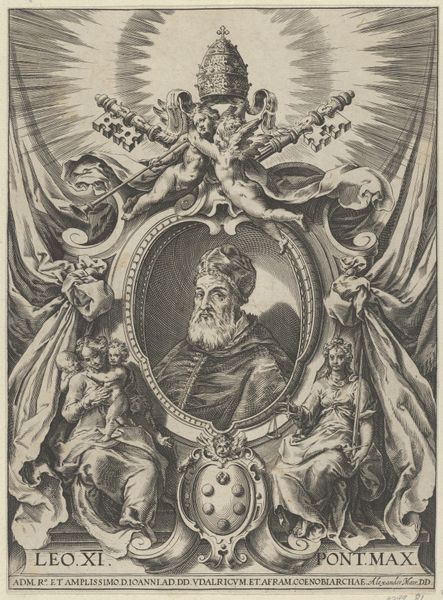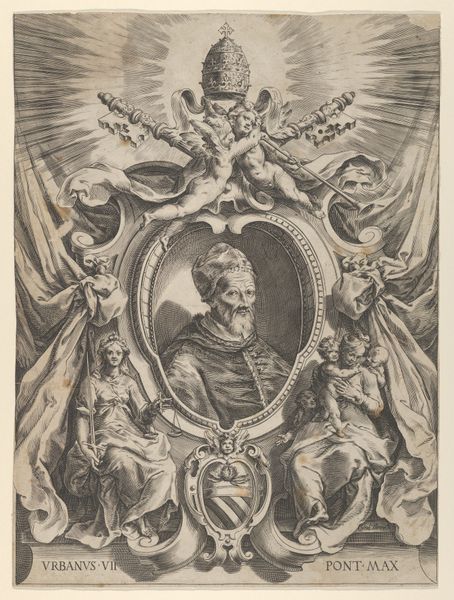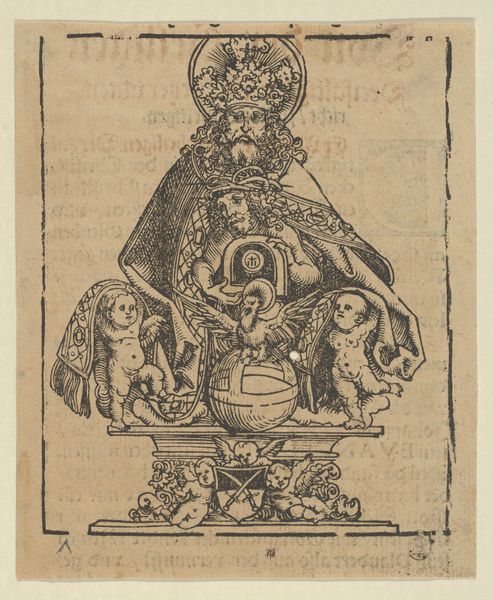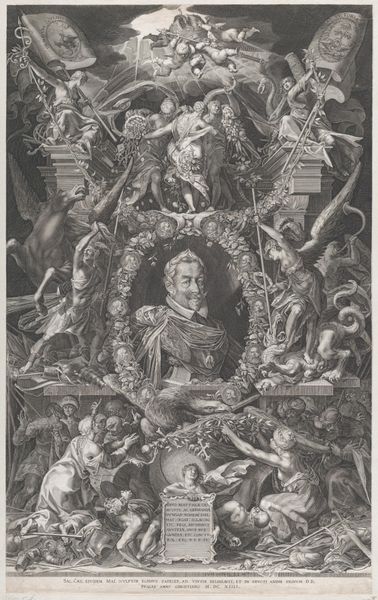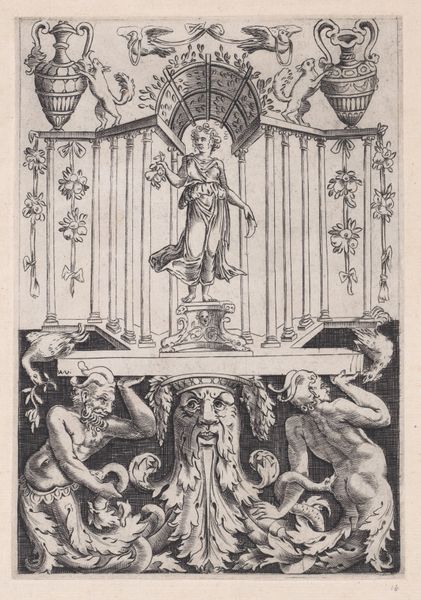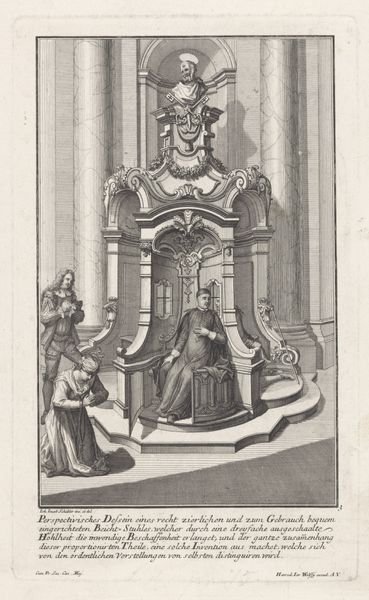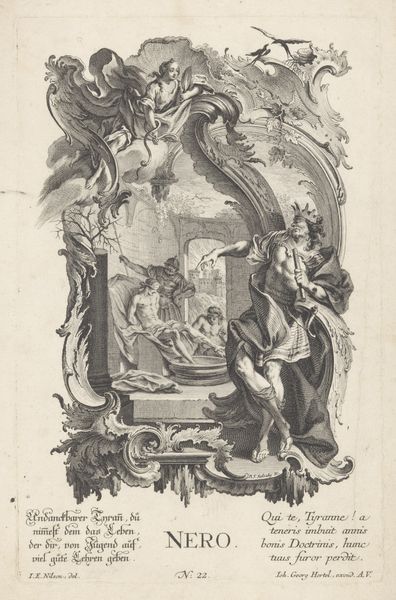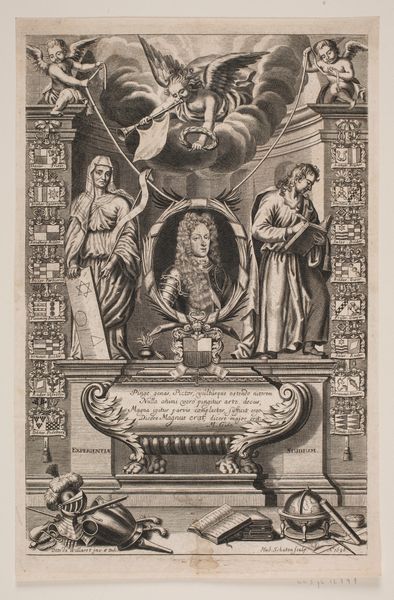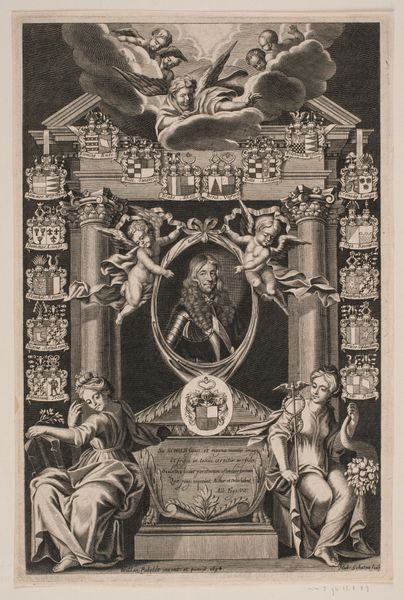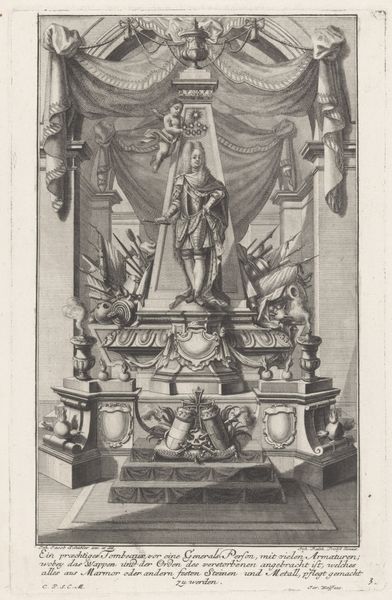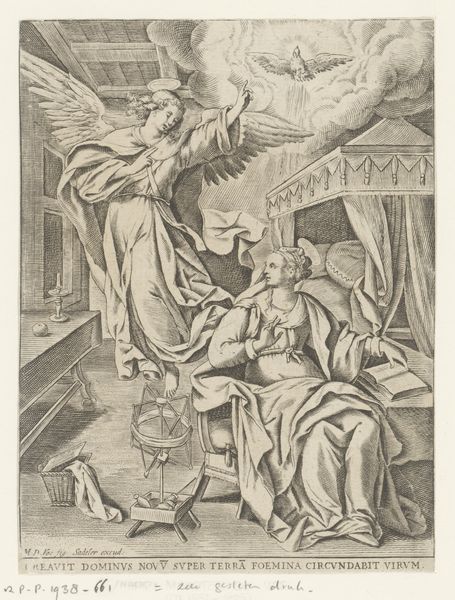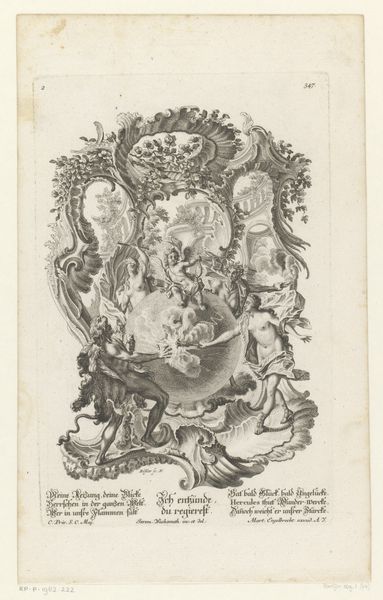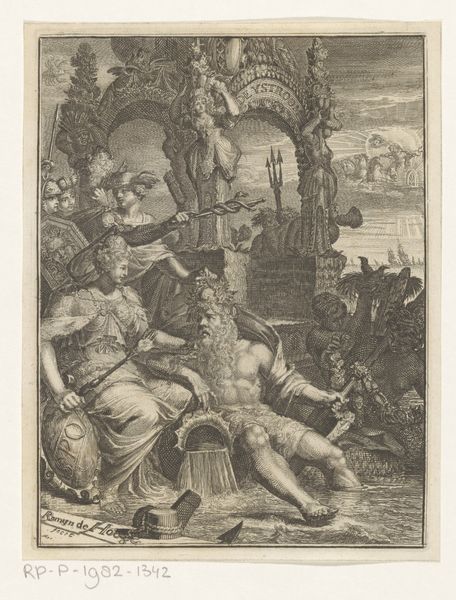
Allegorie op het overlijden van Dorothea Louise von Wittenhorst-Sonsfeld 1746 - 1770
0:00
0:00
gottfriediieichler
Rijksmuseum
print, engraving
#
allegory
#
baroque
# print
#
old engraving style
#
figuration
#
line
#
history-painting
#
engraving
Dimensions: height 335 mm, width mm
Copyright: Rijks Museum: Open Domain
Editor: So, this is Gottfried Eichler the Second's engraving, "Allegory on the Death of Dorothea Louise von Wittenhorst-Sonsfeld," made sometime between 1746 and 1770. The detail is incredible for a print! I find it somber, yet strangely celebratory. What visual language jumps out at you? Curator: Immediately, I’m drawn to the layered symbolism typical of Baroque allegory. Consider the angels, standard figures in such scenes. One bears a scythe, symbolising death, but the other offers a crown. What does that juxtaposition tell us? Editor: It’s like... earthly loss versus heavenly reward? Almost two sides of the same coin, death, and apotheosis perhaps? Curator: Precisely. The artist employs these codified images, but their enduring power comes from our collective understanding of them. See also the bust atop the monument—a lasting image of the deceased elevated by its setting and likeness. How does this lasting image make you feel? Editor: There's a distance created by the stone of the bust, and the layers of symbolic elements separating the viewer from the subject… a removal of the person into the realm of idea. Curator: A crucial observation. Eichler isn’t just memorializing an individual; he’s participating in the social ritual of commemorating status and lineage. It reminds me how such art serves not just as grief, but historical memory and social cohesion, creating a lasting impact for viewers today. Editor: So, this is less about personal grief, and more about solidifying a specific cultural memory? Curator: Exactly. It's fascinating how potent images of mourning also communicate enduring ideas about power and virtue. Thank you for helping reveal how the weight of symbolism reveals cultural memory and a story for its future. Editor: Thanks, that was enlightening. Now I understand more of how symbols build cultural meaning.
Comments
No comments
Be the first to comment and join the conversation on the ultimate creative platform.
